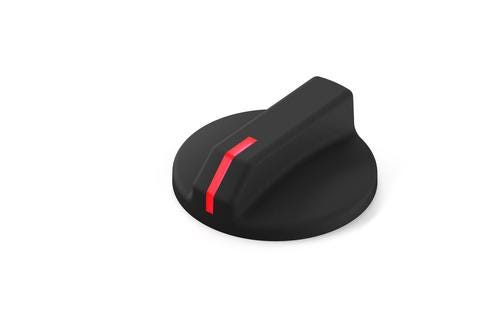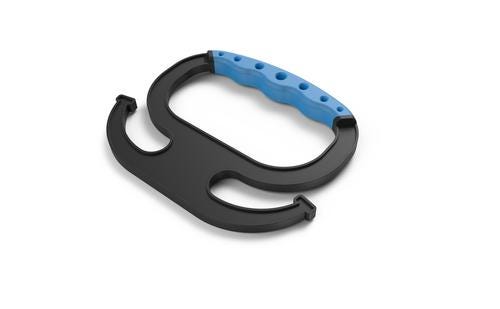Overmolding Gets Big Boost from Proto Labs 14647
September 30, 2016

Proto Labs, known for its super-fast-turn prototyping and low-volume production services with multiple materials and processes, has added another service to its repertoire: rapid overmolding. At last week's Design & Manufacturing Minneapolis show, I saw several examples of overmolded parts made with this new service that can be delivered in less than 15 days.
Overmolding itself isn't new, but it used to be expensive and time consuming, so it was only cost effective in higher volumes, Proto Labs' product manager, Becky Cater, told Design News. The new service, an expansion of the company's existing injection molding service, can produce Proto Labs' standard 25 to 10,000+ custom overmolded parts in its typical turnaround time of 15 days or less.

Engineers and product designers use overmolding for several different reasons, Cater told us. One main reason is because it reduces the cost of multiple-part assemblies, since there's no separate assembly required to join parts made of two or more materials. From a product design standpoint, overmolding can add the esthetics and/or branding of two-color molding to a part. Alternatively, it can add a soft touch for both esthetics and functionality by overmolding an exterior softer material on top of an interior harder material.
Products with that exterior soft touch can help improve grip and durability or dampen vibration. Some examples of products made with overmolding that combine multiple materials are tool handles, personal care products, and medical devices. In surgeon's tools, the exterior soft touch improves a surgeon's grip on the tool, while retaining the strength of the harder material underneath, said Cater.

In Proto Labs' overmolding process, engineering-grade thermoplastics and liquid silicone rubber materials are used to create overmolded prototypes and end-use production parts. You can access design guidelines and material options for the new service here.
The secret to the new speedy service is Proto Labs' trademark method of automating everything. Because of the digital thread, it's now possible to fully automate the entire process, said Cater. Why wasn't this done before? Because with overmolding there are three CAD files that must be integrated, not just a single part file to deal with: the substrate file, the overmold file, and an assembly file for how they fit together. "The challenge was in getting all three working well enough together so we could analyze all three together," she said. "That took awhile. Once we got there, the process could be fully automated."

Because of this automation, there's another benefit to the service, said Cater: design-for-manufacturing feedback. This service comes as part of the free quote after you upload your design files. In addition to the price quote, Proto Labs engineers will give feedback on whether the part design is manufacturable and if any changes are needed.
READ MORE ARTICLES ON MOLDING:
[images via Proto Labs]
Ann R. Thryft is senior technical editor, materials & assembly, for Design News. She's been writing about manufacturing- and electronics-related technologies for 29 years, covering manufacturing materials & processes, alternative energy, and robotics. In the past, she's also written about machine vision and all kinds of communications.
About the Author(s)
You May Also Like



